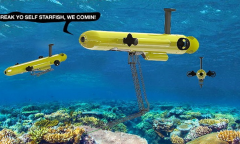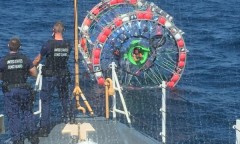By KSalugsugan, | April 27, 2016

A supernova is an astronomical event that occurs during the last stellar evolutionary stages of a massive star's life, whose dramatic and catastrophic destruction is marked by one final titanic explosion
Supernovas have affected Earth since years ago. Its continuous explosions constantly shower the Earth with radioactive debris and cosmic rays.
A few million years back, two massive stars, which are proximal to the solar system, exploded according to the Advanced Composition Explorer spacecraft observations from NASA. It was a smoking gun-like signal which indicated a supernova blowing high-energy electromagnetic radiation and cosmic rays around the planet's neighborhood.
Like Us on Facebook
Martin Israel revealed through Washington University publication that, "The new data also show the source of galactic cosmic rays is nearby clusters of massive stars, where supernova explosions occur every few million years."
Since ACE spacecraft's launch in 1997, it has already observed 15 cosmic rays that are entirely iron-60 radioactive isotope. The element was recorded to have maintained 2.6 million years half-life, which means that 50 percent of the entire iron nuclei will decay and become another element during the time period.
The iron-60's short half-life also means that the element has already been present even a few million years ago. Through the observation, the radioactive iron production was discovered to have been created from either a supernovae which core underwent collapse or through massive stars' death through massive explosions. Reportedly, it occurs as massive star clusters, which is known as the OB associations.
Through the radioactive iron nuclei analysis, as well as space spread and diffusion, the two supernovas most likely took place when the Earth was 2,000 light-years or so, Space reported.
In record, there are at least 20 OB associations that fell within the distance range, close enough for cosmic rays to shower the Earth, the 83-starred Upper Scorpius, 134-starred Upper Centaurus Lupus, and 97-starred Lower Centaurus Crux. Due to their size and proximity, they are more likely the sources of ACE-detected 60Fe.
Meanwhile, another recent research demonstrated iron-60 in the Atlantic, Pacific, and the Indian Ocean floors. The authors were able to conclude that these prove that two supernovas actually exploded; the first in 6.5 to 8.7 million years ago and the other 3.2 to 1.7 million years back.
In the previous week, another study concluded that after examining iron-60 debris on the moon, nine core samples were returned by the crews of Apollo.
The Supernova explosion findings were published on April 21 in the journal Science. Watch video to see how a supernova explodes.
-
Use of Coronavirus Pandemic Drones Raises Privacy Concerns: Drones Spread Fear, Local Officials Say

-
Coronavirus Hampers The Delivery Of Lockheed Martin F-35 Stealth Fighters For 2020

-
Instagram Speeds Up Plans to Add Account Memorialization Feature Due to COVID-19 Deaths

-
NASA: Perseverance Plans to Bring 'Mars Rock' to Earth in 2031

-
600 Dead And 3,000 In The Hospital as Iranians Believed Drinking High-Concentrations of Alcohol Can Cure The Coronavirus

-
600 Dead And 3,000 In The Hospital as Iranians Believed Drinking High-Concentrations of Alcohol Can Cure The Coronavirus

-
COVID-19: Doctors, Nurses Use Virtual Reality to Learn New Skills in Treating Coronavirus Patients











